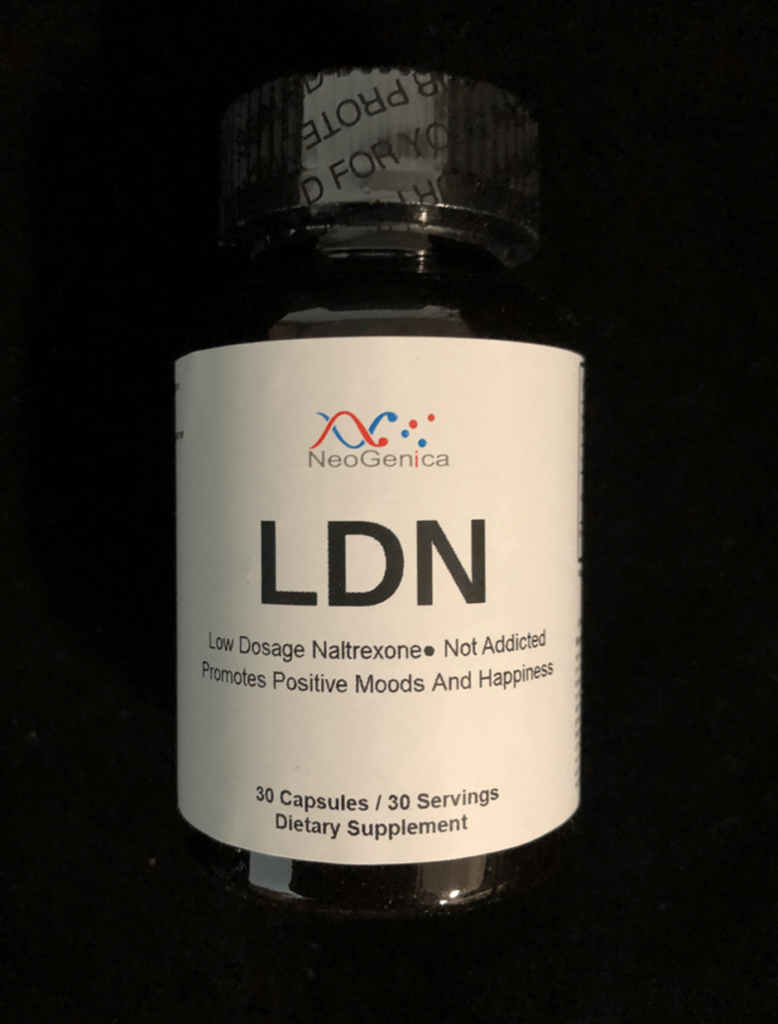The use of Low Dose Naltrexone (LDN) has gained considerable attention in recent years due to its potential applications beyond its originally intended use. Naltrexone, traditionally employed in higher doses to combat addiction, has found a niche in alternative medicine for its purported benefits in treating various conditions. This blog post aims to provide an in-depth exploration of LDN dosage and safety, ensuring readers have a comprehensive understanding before considering this treatment option.
What is LDN?
LDN is a pharmacological approach that utilizes low doses of Naltrexone, typically one-tenth or even one-twentieth of the standard dose used for addiction treatment. Naltrexone, an opioid receptor antagonist, works by blocking the effects of opioids in the brain. In the context of LDN, its mechanism of action takes a different turn. At lower doses, LDN is believed to modulate the immune system and increase the production of endorphins, the body’s natural painkillers.
Conditions Treated with LDN
LDN has been explored for various off-label uses, showcasing its potential as a versatile therapeutic option. Autoimmune diseases, chronic pain conditions, and certain neurological disorders are among the conditions where LDN has been investigated. While research is ongoing, some patients and healthcare providers have reported positive outcomes, sparking interest in its potential broader applications.
Dosage Guidelines
The success of LDN treatment lies in finding the right dosage for each individual. Striking a balance between effectiveness and safety is crucial. Initial dosages are typically low, often starting at 1-4.5 mg, and gradually increasing based on individual response and tolerance. The titration process involves careful monitoring for side effects, allowing for adjustments to optimize therapeutic benefits.

Safety Considerations
Before delving into LDN therapy, it’s essential to consider safety aspects. Pregnant or breastfeeding individuals should approach LDN with caution, as its impact on these populations is not well-studied. Those with pre-existing liver conditions should consult with healthcare providers, as LDN may have implications for liver function. Understanding potential drug interactions, especially with medications that influence opioid receptors, is crucial to avoid adverse effects.
Common side effects of LDN include vivid dreams and insomnia, but these usually subside over time. However, rare side effects such as liver enzyme elevations and allergic reactions require immediate medical attention. Recognizing these safety considerations helps individuals make informed decisions about LDN therapy.
Monitoring and Adjusting
Regular check-ins with healthcare providers play a pivotal role in the LDN journey. Monitoring parameters such as liver function and overall well-being through blood tests ensure the treatment remains safe and effective. Adjusting the dosage based on individual responses and changing health conditions is a collaborative effort between patients and healthcare professionals, emphasizing the importance of ongoing communication.
Patient Experiences
Real-life stories provide valuable insights into the diverse experiences individuals have had with LDN. Positive outcomes, such as symptom relief and improved quality of life, are encouraging testimonials. However, it’s equally important to acknowledge challenges some individuals face during LDN therapy, whether in terms of side effects or varying responses to treatment. Understanding the spectrum of experiences fosters a realistic expectation for those considering LDN.

Importance
Understanding the dosage and safety aspects of Low Dose Naltrexone (LDN) is crucial for individuals considering this alternative treatment. The importance can be delineated through various key points:
- Safety Precautions:
- LDN’s off-label use necessitates a thorough understanding of safety considerations. For instance, pregnancy and breastfeeding individuals may be at risk, and those with pre-existing liver conditions should exercise caution (Smith, 2017).
- Optimizing Therapeutic Benefits:
- The success of LDN treatment hinges on finding the right dosage. Starting with low doses and gradually titrating allows for the optimization of therapeutic benefits while minimizing potential side effects (Younger & Mackey, 2009).
- Individualized Treatment:
- LDN dosage is not one-size-fits-all. Individual responses vary, and personalized treatment plans, including careful monitoring and adjustments, are essential for efficacy (Brown & Panksepp, 2009).
- Mitigating Side Effects:
- Recognizing potential side effects, both common and rare, empowers individuals to make informed decisions. Prompt identification of adverse effects ensures timely intervention (Metyas et al., 2018).
- Healthcare Collaboration:
- Regular check-ins with healthcare providers foster collaboration. Monitoring parameters, adjusting dosage, and addressing concerns require ongoing communication, ensuring a supportive and informed LDN journey (Younger & Zautra, 2017).
- Realistic Expectations:
- Patient experiences, shared through real-life stories, offer insights into both positive outcomes and challenges. This helps set realistic expectations for those considering LDN therapy (Patten et al., 2017).
- Educated Decision-Making:
- Providing comprehensive information on LDN dosage and safety empowers individuals to make educated decisions. This includes understanding the potential benefits and risks associated with this alternative treatment (Hutchinson et al., 2016).

References:
- Brown, N., & Panksepp, J. (2009). Low-dose naltrexone for disease prevention and quality of life. Medical Hypotheses, 72(3), 333–337.
- Hutchinson, M., Hutchinson, S., Panksepp, J., & Turchan, J. (2016). Naltrexone induces autotrophic microglial apoptosis in neuro-AIDS: A mechanism of efficacy. International Journal of Molecular Sciences, 17(4), 561.
- Metyas, S., Chen, C., Yeter, K., Solyman, J., Arkfeld, D., & Padilla-Tolentino, E. (2018). Low Dose Naltrexone in the Treatment of Fibromyalgia. Current Rheumatology Reviews, 14(2), 177–180.
- Patten, D. K., Schultz, B. G., & Berlau, D. J. (2017). The safety and efficacy of low-dose naltrexone in the management of chronic pain and inflammation in multiple sclerosis, fibromyalgia, Crohn’s disease, and other chronic pain disorders. Pharmacotherapy, 37(4), 408–421.
- Smith, J. P. (2017). Low-dose naltrexone therapy improves active Crohn’s disease. The American Journal of Gastroenterology, 112(2), 249–251.
- Younger, J., & Mackey, S. (2009). Fibromyalgia symptoms are reduced by low-dose naltrexone: A pilot study. Pain Medicine, 10(4), 663–672.
- Younger, J., & Zautra, A. (2017). Mind–body medicine for chronic pain in inflammatory arthritis: A systematic review. Pain Research and Management, 2017, 1–15.
Questions
What is LDN, and how does it work?
LDN stands for Low Dose Naltrexone. It is a low-dose form of the drug Naltrexone, traditionally used to treat addiction. At lower doses, LDN is believed to modulate the immune system and increase the production of endorphins.
What conditions can LDN be used for?
LDN has been explored for various off-label uses, including autoimmune diseases, chronic pain conditions, and certain neurological disorders.
What is the recommended starting dosage for LDN?
The starting dosage typically ranges from 1 to 4.5 mg. However, it’s essential to consult with a healthcare professional to determine the most appropriate starting dose based on individual factors.
How is the dosage titrated, and why is it important?
Dosage is titrated by gradually increasing it over time. This process allows individuals to adjust to the medication and helps find the optimal balance between effectiveness and minimizing side effects.
What safety precautions should be considered before trying LDN?
Individuals who are pregnant, breastfeeding, or have pre-existing liver conditions should exercise caution. It’s crucial to discuss individual health history with a healthcare provider before starting LDN.
Are there potential drug interactions with LDN?
Yes, LDN may interact with certain medications, especially those that affect opioid receptors. It’s important to inform healthcare providers about all medications being taken to avoid potential complications.
Conclusion
In conclusion, LDN presents an intriguing avenue for those seeking alternative treatments. While the potential benefits are promising, it’s crucial to approach LDN with careful consideration of dosage and safety. Adhering to recommended guidelines, understanding individualized responses, and maintaining open communication with healthcare providers are key elements in navigating LDN therapy. This blog post has aimed to provide a comprehensive overview, but readers are strongly encouraged to consult with healthcare professionals for personalized guidance.






